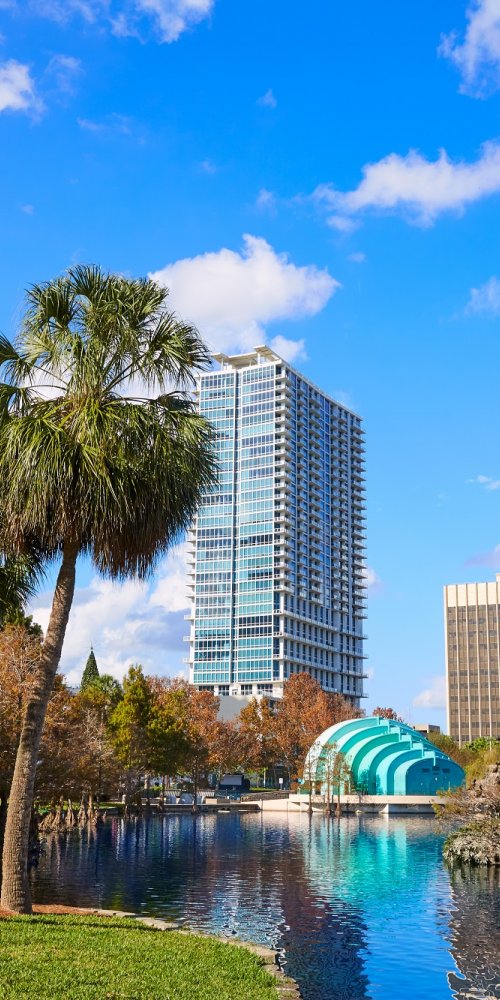

The moment you step into the bustling transport hubs of Orlando, FL, US, the city’s vibrant pulse is unmistakable. Ticket barriers beep a steady rhythm, mirrored by the tram bells chiming softly as they announce arrivals and departures. Around you, the hum of conversations threads through half-a-dozen languages - Spanish, English, Portuguese, French, and more - each voice finding its place in the city’s multicultural tapestry. Beyond the glass doors panorama of sun-drenched streets beckons. You catch the scent of fresh coffee from a nearby café, feel the warmth of Florida sunshine filtering through the terminal windows, and sense the eager anticipation of thousands ready to explore Orlando’s world-famous attractions, parks, and neighbourhoods by public transport.

When I first explored Orlando, I figured renting a car was the only way to get around the sprawling city and theme parks. But public transport in Orlando, FL, US offers an affordable, efficient, and surprisingly green alternative that makes travel stress-free and fun. For starters, the cost savings are significant. A single bus or tram ride costs just $2.00 (Tourism Board, March 2025), which beats the rising prices of parking fees and car rentals, especially when you factor in traffic and gas.
Speed is another factor. The dedicated tram lanes of the Lymmo system, for example, slice through downtown without the delays typical of peak-hour traffic. Trams arrive every 7-10 minutes, and buses operate frequently over comprehensive routes connecting neighbourhoods, tourist hotspots, and the airport. I often found hopping on the bright orange Lymmo tram faster than waiting for a taxi in rush hour.
Plus, Orlando’s public transport is making strides towards reducing urban emissions. Every tram runs fully electric, and many buses now feature hybrid engines. If you want to reduce your carbon footprint and enjoy cityscapes without the hassle, public transport in Orlando, FL, US is your ticket. You get to observe vibrant street life, mingle with locals, and keep your travel environmentally mindful - all while saving time and money. So if you’re wondering how to get around Orlando, FL, US with ease, dive into the city’s public transport options - it’s a ride worth taking.
| Mode | Lines | Peak Frequency | Night Service |
|---|---|---|---|
| Bus | 35+ | 10-20 minutes | Yes, limited routes till 1:00 AM |
| Light Tram (Lymmo) | 4 | 7-10 minutes | No |
| Commuter Rail (SunRail) | 1 (North-South) | 30 minutes peak | No |
| Bike-share | Varies - Downtown and Park zones | On demand | 24/7 |
Orlando’s transit system weaves together buses, trams, and rail to cover both the bustling downtown and outer suburbs. The high-frequency Lymmo trams serve the downtown core with dedicated lanes, making short hops nearly seamless. Outside this heart, robust bus lines and the commuter-focused SunRail link commuters and tourists alike, especially for longer trips or airport transfers. For a city many associate with car culture, Orlando’s multi-modal network surprises with its reliability, especially for popular tourist corridors and local destinations.
Orlando’s public transport experiences clear peaks during weekday mornings (6:30–9:30 AM) and evenings (4:30–7:00 PM) as workers and students travel. During these times, buses and some tram routes run more frequently, helping move crowds swiftly.
Off-peak hours can be quieter but watch for reduced service on some lines, particularly late evenings when night routes operate fewer vehicles.
Tip: If you’re a visitor aiming to explore theme parks or downtown without the crush, consider starting trips early or after rush hour to enjoy spacious rides.
Weekends often see varied demand - peak tourist areas like International Drive get busier mid-day, but suburban routes relax, offering a usually pleasant ride.

All buses and trams are fully wheelchair accessible with ramps and priority seating. Drivers are trained to assist and secure wheelchairs safely.
Strollers fold easily and can be stored onboard. Priority space is available on all vehicles but boarding during peak times may be challenging; plan accordingly.
Buses and commuter trains accommodate luggage racks and provide extra space near doors. Avoid peak hours when trains are crowded to ease boarding with large bags.
Yes, especially if you hold a paper ticket or single ride fare. Digital tickets purchased via apps auto-validate, but onboard inspectors still verify possession.
Yes. Most vehicles accept contactless bank cards with daily fare capping set at $6.00. This method is fast and convenient for tourists.
Yes, you can buy 24-hour and 72-hour unlimited ride passes tailored for visitors. These passes work on buses, trams, and SunRail commuter trains.
Generally yes, though some late-night service routes are limited. Stay alert, use busy stops, and avoid isolated stations after midnight.
If you’re planning your next trip and want to explore without the car hassle, public transport in Orlando, FL, US is your best friend. Share your experiences or questions below - we love hearing from fellow travellers! Don’t forget to sign up for our newsletter for more insider tips.

Additional articles from our network with useful insights about Orlando.